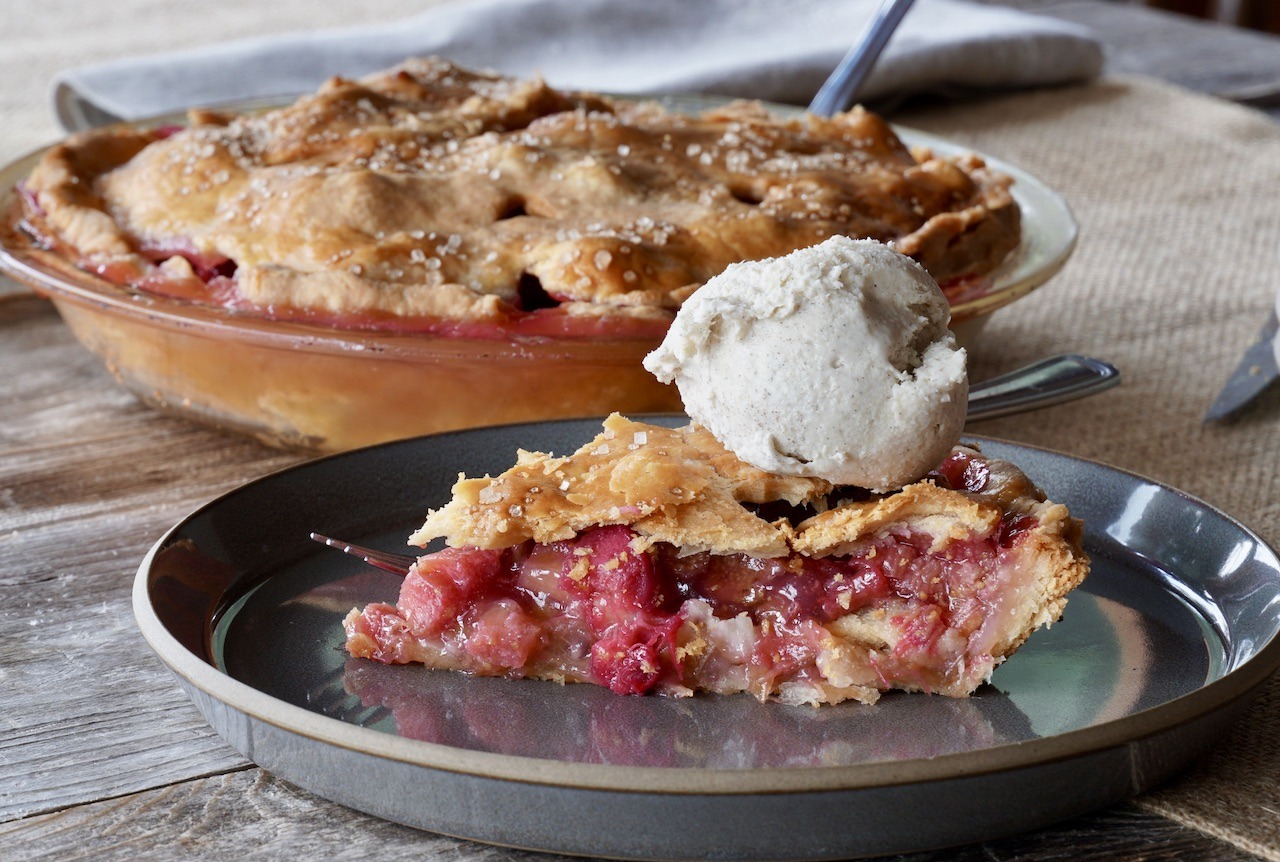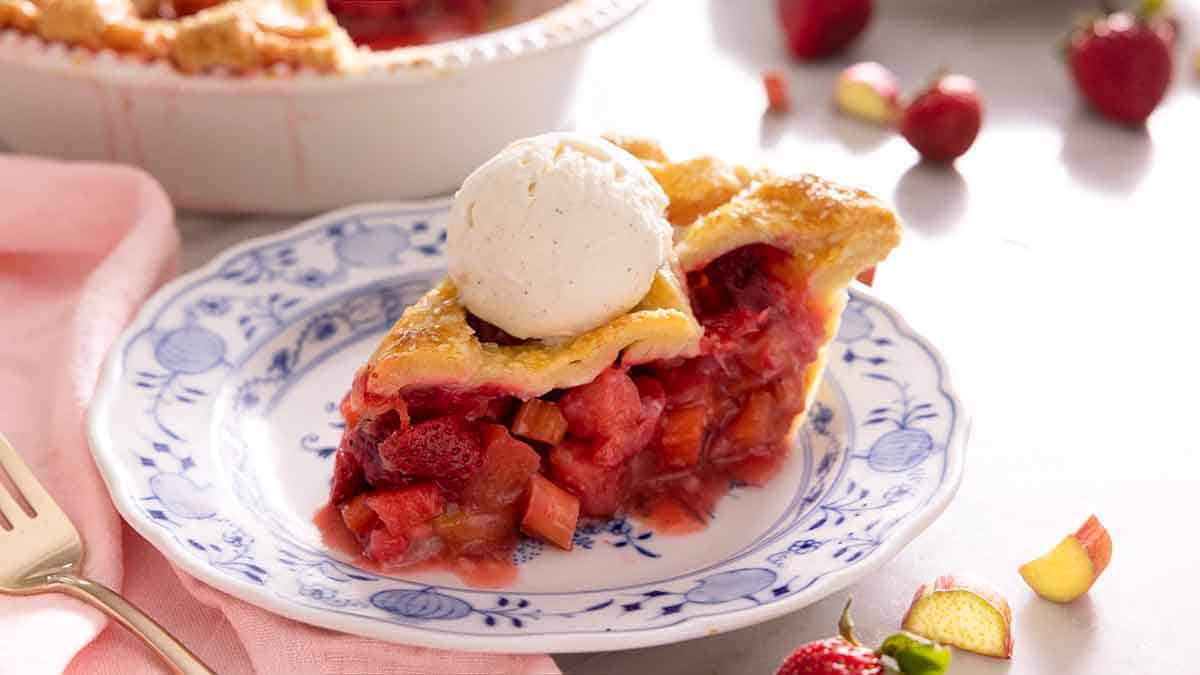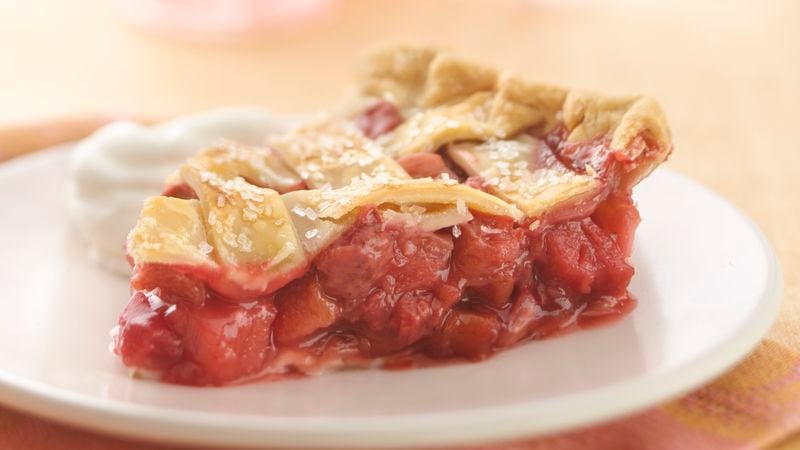Contents
Rhubarb pie, a classic dessert known for its distinctive tartness and vibrant flavor, has been a beloved treat for generations. This pie, often enjoyed during the spring and summer months, combines the unique taste of rhubarb with a sweet, flaky crust. In this article, we will explore the history of rhubarb pie, its culinary significance, how to make it, and some variations and tips to perfect this delightful dessert.
The History of Rhubarb Pie

Origins of Rhubarb
Rhubarb is a perennial plant that has been cultivated for thousands of years. Native to Asia, particularly Siberia, rhubarb was initially valued for its medicinal properties. It was used in traditional Chinese medicine as a laxative and for its purported ability to cleanse the body of toxins.
Rhubarb made its way to Europe in the 14th century but was primarily used for medicinal purposes until the 18th century. It wasn’t until sugar became more accessible and affordable that rhubarb began to be used in culinary applications, particularly in desserts.
Introduction to the Western World
Rhubarb was introduced to North America by European settlers in the late 18th century. Its cultivation spread quickly, particularly in the northern United States and Canada, where the plant thrived in the cooler climates. The pie, a staple of European cuisine, naturally became the perfect vessel to showcase the tartness of rhubarb, balancing it with sweeteners to create a deliciously tangy dessert.
Culinary Significance of Rhubarb Pie
Rhubarb pie holds a special place in many culinary traditions. It is celebrated for its unique flavor profile, which combines the tartness of rhubarb with the sweetness of sugar or other fruits. This balance creates a complex and refreshing taste that is particularly appreciated in the warmer months when rhubarb is in season.
Rhubarb in Regional Cuisine
In many regions, rhubarb pie is a cherished seasonal dish. In the Midwest and Northeast United States, as well as in parts of Canada, rhubarb pie is a common sight at family gatherings, picnics, and community events. It is often made using recipes passed down through generations, with each family adding its own twist to the classic dessert.
How to Make Rhubarb Pie

Ingredients
To make a traditional rhubarb pie, you will need the following ingredients:
- For the crust:
- 2 1/2 cups all-purpose flour
- 1 cup unsalted butter, chilled and cut into small pieces
- 1/4 cup granulated sugar
- 1/2 teaspoon salt
- 1/4 to 1/2 cup ice water
- For the filling:
- 4 cups rhubarb, cut into 1/2-inch pieces
- 1 1/4 cups granulated sugar
- 1/4 cup cornstarch
- 1/4 teaspoon salt
- 1 tablespoon lemon juice
- 1 teaspoon vanilla extract
Instructions
- Prepare the Crust:
- In a large mixing bowl, combine the flour, sugar, and salt.
- Add the chilled butter pieces and use a pastry cutter or your fingers to mix until the mixture resembles coarse crumbs.
- Gradually add ice water, 1 tablespoon at a time, until the dough comes together.
- Divide the dough into two discs, wrap in plastic wrap, and refrigerate for at least 1 hour.
- Prepare the Filling:
- In a large bowl, combine the rhubarb, sugar, cornstarch, salt, lemon juice, and vanilla extract. Mix well and let sit for 15 minutes.
- Assemble the Pie:
- Preheat the oven to 375°F (190°C).
- Roll out one disc of dough on a lightly floured surface to fit a 9-inch pie dish. Transfer the dough to the pie dish.
- Pour the rhubarb filling into the crust.
- Roll out the second disc of dough and place it over the filling. Trim and crimp the edges to seal.
- Cut several slits in the top crust to allow steam to escape.
- Bake the Pie:
- Place the pie on a baking sheet to catch any drips.
- Bake for 50-60 minutes, or until the crust is golden brown and the filling is bubbly.
- Let the pie cool on a wire rack before serving.
Variations of Rhubarb Pie
Strawberry Rhubarb Pie
One of the most popular variations of rhubarb pie is the strawberry rhubarb pie. This version adds fresh strawberries to the filling, enhancing the flavor with their natural sweetness. To make a strawberry rhubarb pie, simply replace half of the rhubarb with sliced strawberries and follow the same preparation and baking instructions.
Crumb-Topped Rhubarb Pie
For a different texture and flavor, consider making a crumb-topped rhubarb pie. Instead of a top crust, this variation uses a crumbly streusel topping made from butter, flour, sugar, and sometimes oats or nuts. The topping adds a delightful crunch and complements the tangy filling.
Rhubarb Custard Pie
Rhubarb custard pie combines the tartness of rhubarb with a creamy custard filling. To make this variation, mix the rhubarb with a custard mixture made from eggs, milk or cream, sugar, and a bit of flour or cornstarch. Pour the mixture into the crust and bake until the custard is set.
Tips for Making the Perfect Rhubarb Pie

- Choose Fresh Rhubarb: Use fresh, firm rhubarb stalks for the best flavor and texture. Avoid rhubarb leaves, as they are toxic and should not be consumed.
- Balance the Sweetness: Rhubarb is naturally very tart, so it’s important to balance it with enough sugar. Taste the filling before baking and adjust the sweetness to your preference.
- Prevent a Soggy Crust: To prevent the bottom crust from becoming soggy, you can partially bake (blind bake) the crust before adding the filling. Additionally, using a thickening agent like cornstarch helps to absorb excess moisture from the filling.
- Let It Cool: Allow the pie to cool completely before slicing. This helps the filling to set and makes it easier to cut clean slices.
Contemporary Relevance and Popularity
Rhubarb pie continues to be a beloved dessert in contemporary cuisine. Its unique flavor and nostalgic mancingduit appeal make it a popular choice for spring and summer celebrations. Many modern chefs and bakers have embraced rhubarb, incorporating it into innovative recipes and presenting it in new, creative ways.
Rhubarb in Fine Dining
In recent years, rhubarb has gained popularity in fine dining and upscale restaurants. Chefs use it in both sweet and savory dishes, showcasing its versatility. Rhubarb compotes, sauces, and chutneys are paired with meats and cheeses, while rhubarb-based desserts appear on seasonal menus.
Rhubarb in Popular Media
Rhubarb pie and rhubarb-related dishes frequently appear in food blogs, cooking shows, and social media. The vibrant color and distinctive flavor of rhubarb make it a favorite among food photographers and influencers, contributing to its enduring popularity.
Conclusion
Rhubarb pie is a timeless dessert that continues to delight generations with its tangy flavor and rich history. From its origins in medicinal use to its place as a beloved seasonal treat, rhubarb has remained a cherished ingredient in many kitchens. Whether enjoyed in its classic form or as a creative variation, rhubarb pie is a testament to the enduring appeal of simple, flavorful, and lovingly prepared food.
Read More Article About “Bagel Bliss: Savor the Delightful Taste and Timeless Charm of this Classic Treat“



